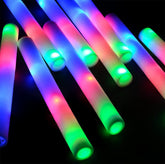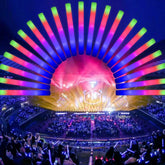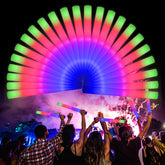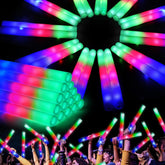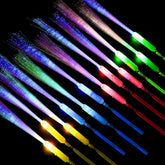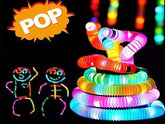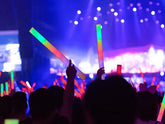Are Glow Sticks Toxic To Animals? Guide to Safely Using Glow Sticks
Glow sticks are widely used in parties and entertainment events. However, for our pets, especially curious animals like cats and cats dogs, glow sticks can be an attraction. However, we need to be aware that the components of glow sticks may pose a threat to our pets, particularly cats dogs, which may chew on them. What harm can glow sticks cause to our pets? How can we protect our pets? Let's explore together!
What Are the Chemicals in a Glow Stick? Are the Chemicals Safe?
Are glow sticks harmful to animals? First, let's understand their components. There are two common types of glow sticks on the market: chemiluminescent glow sticks that glow through a chemical reaction and LED glow sticks that glow using LED lights. Let's take a look at their respective components.
Chemiluminescent glow sticks: Chemiluminescent glow sticks primarily contain four chemical components: Hydrogen Peroxide, Fluorophores, Diacetate, and Acid. If your pet ingests a large amount of these chemical components, it may lead to the following symptoms.
Hydrogen Peroxide
Oral and gastrointestinal irritation: Ingesting hydrogen peroxide from the glow stick may cause irritation in the mouth, esophagus, and gastrointestinal tract, resulting in excessive salivation, vomiting, and discomfort.
Fluorophores
Oral and gastrointestinal irritation: Fluorescent dyes may irritate the mouth, esophagus, and gastrointestinal tract of pets, leading to excessive salivation, vomiting, and discomfort.
Toxic effects: Some fluorescent dyes may have toxic effects on animals, potentially causing more severe reactions such as rapid breathing and gastrointestinal discomfort.
Diacetate:
Vomiting and discomfort: Acetate esters may cause pets to experience vomiting, diarrhea, and discomfort.
Acid:
Gastrointestinal irritation: Acid may irritate the mouth, esophagus, and gastrointestinal tract, resulting in vomiting, diarrhea, and discomfort.
LED glow sticks:LED glow sticks are assembled with LED lights, batteries, and an outer casing. They are a safe, environmentally friendly, long-lasting, and colorful light source that does not contain chemical components. They do not generate heat, are not easily breakable, and provide long-lasting illumination, making them more pet-friendly. The long-lasting glow and vibrant colors of LED glow sticks can capture the attention of pets, providing enjoyable entertainment for them.

What Happens if An Animal Eats a Glow Stick?
Chemical glow sticks contain four chemical components. When using them, if the glow stick is intact and the chemical components are not leaking, it will not pose any harm to pets. However, pets like dogs may chew on glow sticks. Even though the concentrations of these chemical components are very low and most pets can eliminate harmful substances with their own resistance, ingesting a significant amount of chemical glow stick can potentially lead to the following discomfort and potential hazards:
Oral and gastrointestinal irritation: Hydrogen peroxide and fluorescent dyes in chemical glow sticks may cause irritation in the mouth, esophagus, and gastrointestinal tract of animals, resulting in excessive salivation, vomiting, diarrhea, and discomfort.
Gastrointestinal discomfort: Animals may experience stomach discomfort, pain, bloating, and other symptoms, making them feel uneasy and in pain.
Toxic symptoms: Fluorescent dyes may have certain toxicity, and ingesting a large amount of them can lead to toxic symptoms such as dizziness, fatigue, and nausea.
Rapid breathing: In certain situations, especially if the glow stick breaks and the animal comes into direct contact with the fluorescent dye, it may cause rapid or labored breathing.
Gastrointestinal obstruction: If an animal ingests fragments of a broken glow stick, it may result in gastrointestinal obstruction, requiring surgical intervention in severe cases.
Other discomfort symptoms: Animals may show signs of discomfort, anxiety, excessive excitement, or abnormal behavior such as head shaking, itching, restlessness, and more.
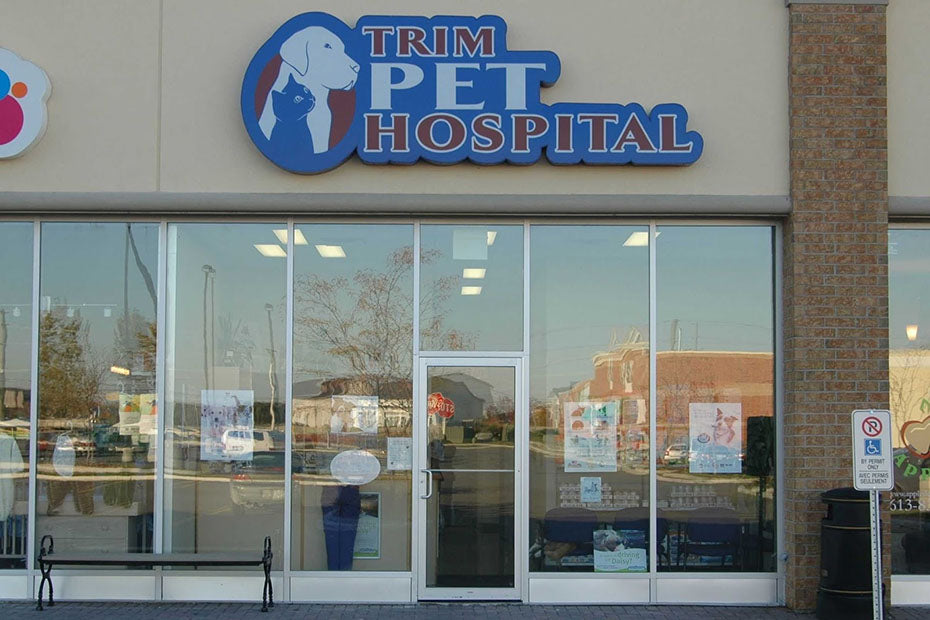
What To Do If An Animal Eats A Glow Stick? Guidelines And Actions
If your cats dogs accidentally bites into a chemical glow stick, you must take measures to assist your cats dogs. However, most importantly, you should contact a veterinarian for professional help and assistance promptly. Here are some emergency measures:
1.Stay Calm:First, you need to control your emotions to avoid causing further harm to your cats dogs. Immediately contact a veterinarian. Call the vet's phone number or the emergency pet rescue hotline, describe the animal's symptoms, and the type of glow stick it may have been exposed to. The vet will provide first aid guidance and recommend going to the veterinary clinic.
2.Observe Symptoms:Pay attention to whether the animal experiences vomiting, excessive salivation, diarrhea, discomfort, rapid breathing, abnormal behavior, or if you see your dog swallowing fragments of the glow stick. These symptoms indicate significant ingestion of the glow stick, and you need to take your pet to the hospital immediately. If you only see your cats dogs chewing on the glow stick and no symptoms mentioned above occur, it may have only come into contact with a small amount of the chemical components, which is not harmful to your cats dogs.
3.Avoid Self-Treatment:Although you are worried about your pet, it's best not to handle or attempt to induce vomiting on your own, as this may lead to more serious problems. You should follow the veterinarian's guidance for proper handling.
4.Some Mild Measures:If you are certain that your pet has ingested only a small amount of the chemical components, most animals that have chewed on glow sticks may exhibit symptoms like excessive drooling, restlessness, irritability, and/or aggressive behavior, lasting only a few minutes, and it's merely a reaction to the unpleasant taste of the liquid. Generally, the only required treatment is to feed your pet a small amount of milk, tuna juice, or soft pet food to dilute the residual taste. Do not force-feed and follow the veterinarian's advice.
5.Best Choice:If you want to ensure no harm to your pet, it's best to choose glow sticks that are safe for pets, such as LED glow sticks. They are the ideal choice for pet-friendly parties at home, being safe, eco-friendly, non-toxic, and harmless.An example of such LED glow stick is shown below.

Led Glow Sticks Safe for Pets
LED glow sticks are safe and non-toxic for pets. They do not contain harmful chemicals in their composition, generate no heat, and have a sturdy, unbreakable outer casing. They provide a lasting glow. Pets can enjoy an entertaining experience by appreciating the light and shadows from a distance. LED glow sticks align with environmental and sustainable principles, offering a safe and delightful play option for pets. You can enjoy joyful moments with your pets with peace of mind.

